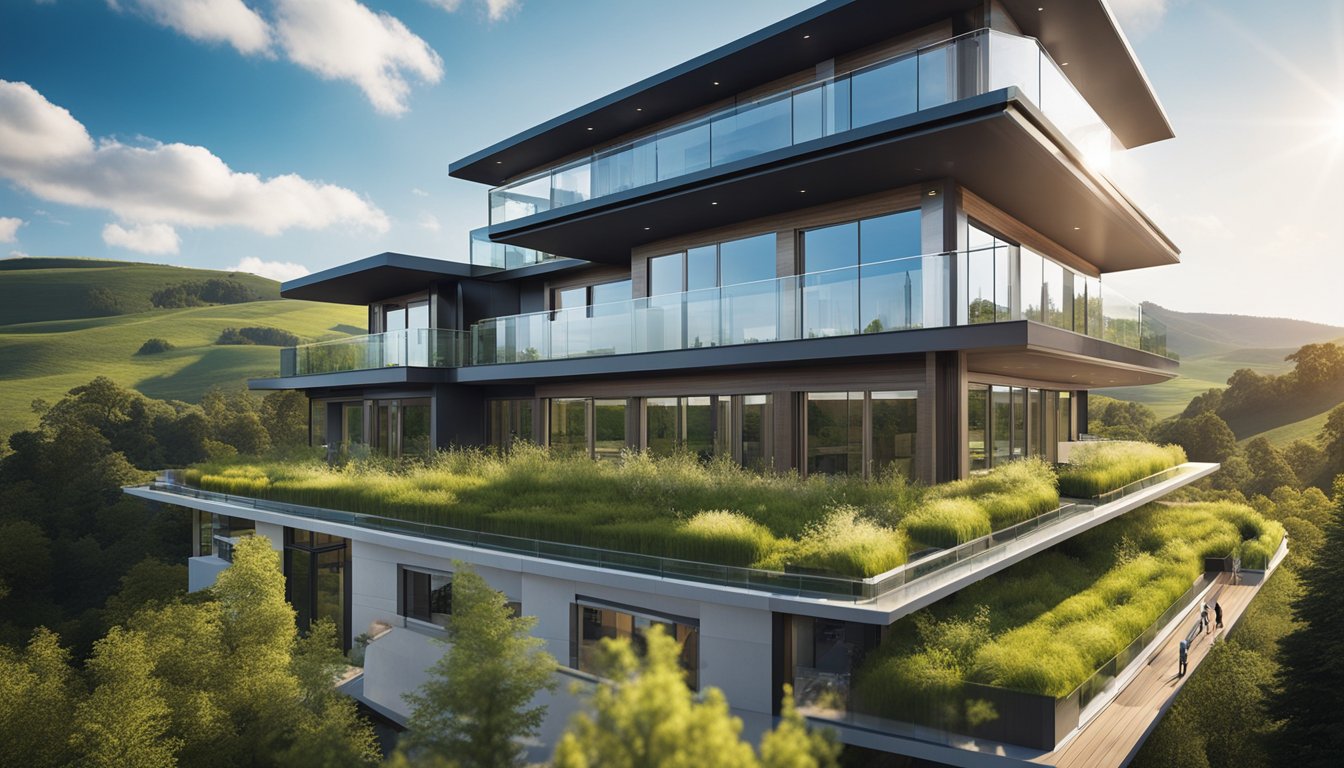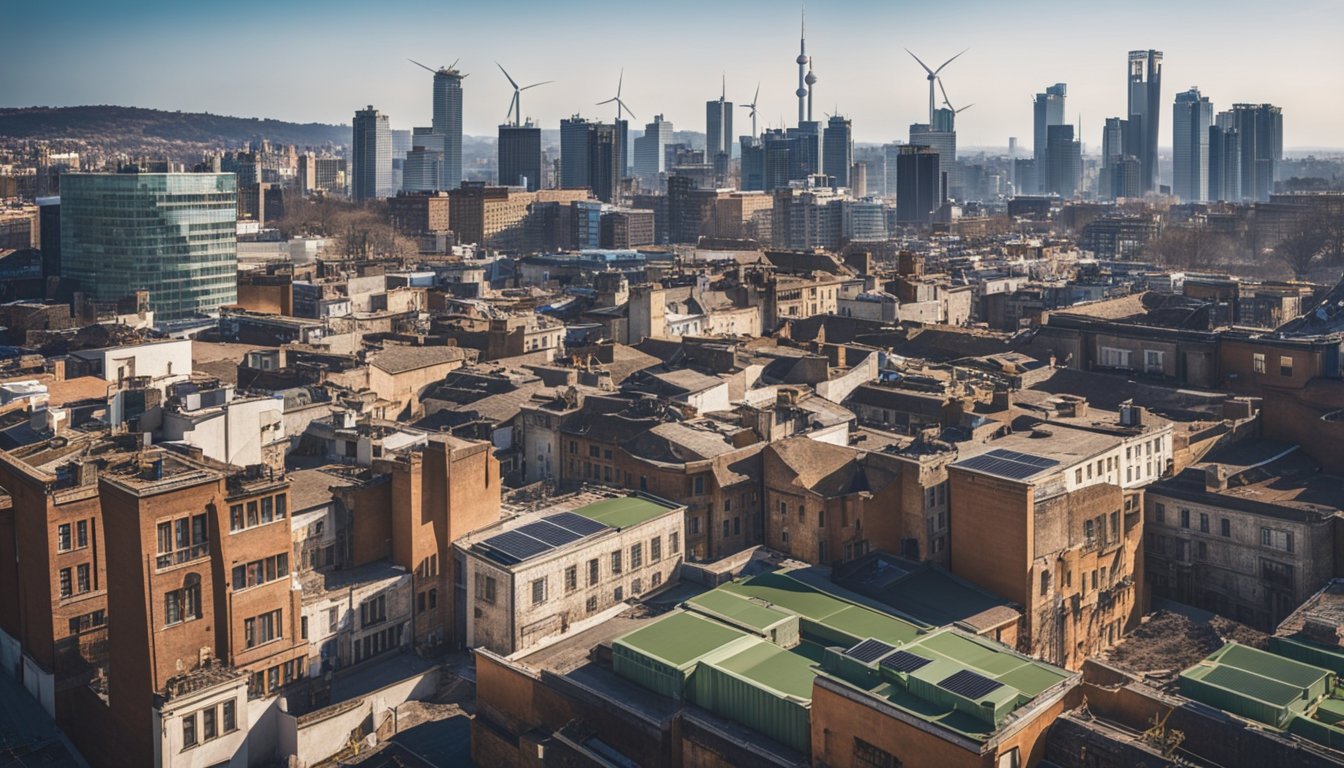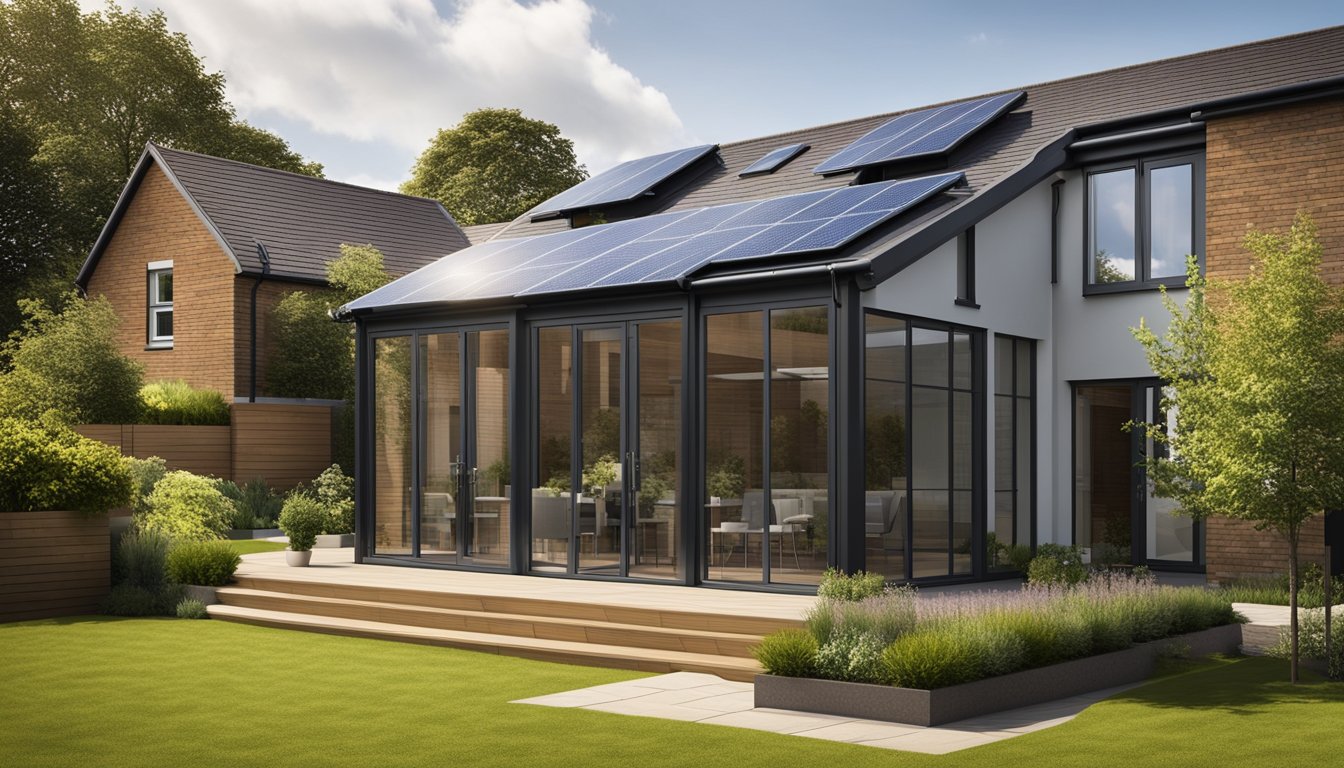Late updated: 26 Jan 2025 13:01
Written by: Eleanor Hartman
The Rise Of Energy-Efficient Building Techniques In The UK: Transforming Construction Practices
In recent years, the UK has witnessed a transformative shift towards energy-efficient building techniques, driven by the urgent need to mitigate climate change and reduce energy consumption. These innovative methods are not just shaping new constructions but are also pivotal in retrofitting the existing, diverse UK housing stock. Embracing these advancements is key to improving sustainability and achieving significant energy efficiency.

As businesses grapple with rising energy costs, smarter buildings offer a promising solution. By leveraging cutting-edge technology and sustainable practices, these energy-efficient structures are setting new standards in design and function. The emphasis on reducing carbon footprint while increasing cost-effectiveness is reshaping the way we think about the built environment.
The journey to energy efficiency presents both challenges and opportunities, particularly in updating older buildings. Yet, by overcoming these hurdles, we can enhance the liveability and performance of our spaces. This pursuit is not just about compliance with regulations—it's about fostering a sustainable future for generations to come.
Key Takeaways
- UK buildings are increasingly adopting energy-efficient techniques.
- Sustainable practices are crucial for reducing energy consumption.
- Retrofitting presents both challenges and opportunities.
Fundamentals of Energy-Efficient Building Techniques
In the UK, progress in energy-efficient building techniques is heavily reliant on specific elements such as insulation and ventilation, benchmarking with Energy Performance Certificates (EPCs), and stringent adherence to building regulations.
Insulation and Ventilation: Keys to Efficiency
Proper insulation and ventilation are critical to improving energy efficiency. Insulation works by reducing heat loss or gain in the building's thermal envelope. This can significantly decrease the need for artificial heating and cooling, thus cutting energy consumption. Materials like fibreglass, cellulose, and rigid foam are often used to achieve optimal results.
Ventilation, on the other hand, is essential for maintaining air quality and preventing overheating. Effective ventilation systems ensure a consistent flow of fresh air while minimising energy loss. These systems can include mechanical ventilation with heat recovery (MVHR), which retains most of the energy that would otherwise be lost with traditional ventilation methods. Combining superior insulation with effective ventilation creates a systemic approach to maximise energy efficiency.
Energy Performance Certificates: Benchmarking the Thermal Envelope
Energy Performance Certificates (EPCs) provide a measurable benchmark for a building's thermal performance. These certificates rate the energy efficiency of a building on a scale from A (most efficient) to G (least efficient). EPCs reflect how well a building’s thermal envelope inhibits unwanted heat transfer. Key factors that influence an EPC rating include the quality of insulation, ventilation, and the efficiency of installed heating systems.
Acquiring a high EPC rating not only helps reduce energy bills but also increases a property's market value. Landlords, homeowners, and developers are keen to achieve favourable EPC ratings. This emphasises the importance of continuous improvements in insulation and ventilation as part of achieving efficient energy performance.
Regulatory Framework: Adhering to Building Regulations
Building regulations in the UK establish mandatory standards that address the energy performance and sustainability of constructions. These regulations set specific requirements for thermal performance, including insulation levels and ventilation rates. Adherence ensures that buildings not only meet but often exceed national standards for efficiency.
The strict regulatory framework compels developers to integrate energy-efficient materials and systems into new constructions and renovations. By maintaining these standards, we support sustainable building practices that align with the UK’s goals to reduce carbon emissions. This ensures that energy-efficient building techniques remain a critical and evolving aspect of modern architecture.
Challenges and Opportunities in Retrofitting Existing Buildings

Retrofitting existing buildings presents an opportunity to significantly reduce energy consumption and carbon emissions in the UK. The process also faces several challenges, including financial limitations and technological gaps. Examining these complexities, particularly in historic buildings, is key to advancing energy efficiency.
Balancing Conservation and Energy Efficiency in Historic Buildings
Historic buildings pose unique challenges with retrofitting due to preservation concerns. Listed buildings and those in conservation areas must adhere to strict regulations, impacting retrofit potential. We often see tension between maintaining architectural integrity and reducing carbon emissions.
Historic England works to ensure that adaptations, such as adding low carbon heating systems, do not compromise heritage aspects. Innovative solutions, like insulation that matches the building’s original materials, help maintain aesthetic while improving energy performance. Developing these techniques is essential for reconciling conservation with sustainability.
Financial and Practical Barriers to Retrofitting
Retrofitting requires significant investment, posing barriers for many property owners. The potential for reduced energy bills and long-term savings is high, yet the initial cost deters many. For those experiencing fuel poverty, upfront expenses for measures such as heat pumps can be prohibitive.
Obtaining listed building consent orders can also be a time-consuming process. Navigating through bureaucratic channels delays projects and adds complexity. Financial incentives and streamlined approval processes could accelerate progress, allowing more existing buildings to benefit from energy-efficient advances. Collaborating with financial institutions for retrofit funding solutions is necessary.
Technological Innovations in Heating and Energy Delivery
Technological advances are driving improvements in retrofitting processes. Innovations in low carbon heating and heat pumps are crucial for adapting existing buildings to modern energy standards. Our ability to integrate these systems efficiently boosts the feasibility of retrofits.
Developments in decarbonisation technologies offer new ways to lower emissions. Smart energy systems provide greater control over energy use and contribute to cost savings. We are witnessing a transformation in how energy delivery systems interact with building design, making retrofits more appealing and practical. Successful implementation relies on continuous innovation and adaptation to emerging technologies.
Frequently Asked Questions

Our exploration of energy-efficient building techniques in the UK addresses common concerns from general definitions and methods to government incentives and future goals. By understanding these elements, we can better grasp the landscape of sustainable construction.
What constitutes an energy-efficient building in the UK context?
Energy-efficient buildings in the UK minimise energy use through design, construction, and operation. They incorporate energy-saving technologies, passive design strategies, and renewable energy sources while maintaining comfort and functionality.
Which energy-saving measures are frequently implemented in UK construction?
Common practices include improved insulation, high-efficiency windows, and advanced heating systems such as heat pumps. Builders often utilise solar panels and ensure airtightness to reduce energy consumption.
How does the UK government incentivise energy efficiency in buildings?
The government provides grants and tax incentives to encourage energy-efficient construction and retrofitting. Programmes like the Green Homes Grant have been established to support homeowners and builders in adopting these measures.
What are the specifications of the energy efficiency standard for social housing in England?
Social housing in England adheres to strict energy efficiency standards, including improved insulation, sustainable materials, and reduced carbon emissions. Compliance with these standards aims to enhance occupant comfort and reduce energy bills.
By what means can residential properties improve their energy performance certificate ratings?
Homeowners can enhance EPC ratings by upgrading insulation, installing energy-efficient lighting, and incorporating renewable energy systems. Regular maintenance of existing systems also plays a crucial role in improving these ratings.
What objectives has the UK set for building energy efficiency by 2030?
The UK has set ambitious targets to reduce carbon emissions from buildings significantly by 2030. These include widespread adoption of low-carbon technologies and raising existing building standards to ensure greater overall energy efficiency.